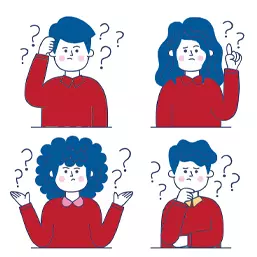
Using Appreciative Inquiry As A Tool
If you ask the wrong question, of course, you get the wrong answer.
– Amory Lovins
Introduction
It is a well-established fact that whatever we give our attention to will thrive. Organizations, like individuals, go in the direction of the things that they are most interested in. It is much too common for an organization’s energy, attention, and creative resources to be diverted by a concentration on deficit thinking – that is, striving to correct flaws. When this story gets embedded in the culture of a business, it becomes hard to achieve your maximum potential.
The basic premise of appreciative inquiry could be applied to how an organization views a glass of water. If it is viewed as half empty, the organization would probably be oriented towards problem solving and deficit thinking—how do we fill the glass to the brim or how do we catch the culprit drinking our water. If the glass were viewed as half full, the organization would probably be positively oriented towards “what works” and on enjoying the small and/or individual successes of each day.
Appreciative inquiry searches for “what works” based on which some of it’s assumptions are:
- In every society, organization, or group, something works.
- What we focus on becomes our reality.
- Reality is created in the moment, and there are multiple realities.
- The act of asking questions of an organization or groups influences the group in some way.
- People have more confidence and comfort to journey to the future (the unknown) when they carry forward parts of the past (the known).
- If we carry parts of the past forward, they should be what is best about the past.
- It is important to value differences.
- The language we use creates our reality.
Organizations using appreciative inquiry adopt a non-traditional method of problem solving. They embrace it as an alternative way of thinking about communicating change as well as improving internal and external communication. Appreciative inquiry has the potential to effectively increase your communication capacity because traditional communication has a common theme of focusing on what is wrong and how we might repair it. Whereas appreciative inquiry is distinct from the traditional communication strategies that typically focus on the root causes of organizational problems.
If you recollect your most recent performance evaluation, doctor’s appointment, or argument with a friend or spouse, you will often find this pattern of communication. Basically, traditional communication starts by identifying and addressing defects and issues.
Appreciative Inquiry, on the other hand, is concerned with enhancing the organization’s strength by focusing on what is right. Instead of focusing on what is wrong, it focuses on what is good and how we may make it better.
Appreciative Inquiry is a constructive technique that builds on a person’s assets. It differs from previous techniques in that it emphasizes the qualities of both the individual and the team. Through practicing appreciative inquiry, we become more conscious of how we may refine our abilities in order to be more successful in the future. It is the act of posing a question for the benefit of others. As a result, the goal is to concentrate on developing the positive aspects of persons.
Several firms have discovered that it is a renewing and refreshing method of handling difficulties and re-energizing their employees. Individuals are asked to concentrate on the strengths that already exist in them and their organization, both internally and outside. The outstanding performance of team members is a direct result of this optimistic attitude. It facilitates the development of a common vision and direction. It also encourages learning and creativity, as well as re-energizing the team’s strength via the reinforcement of connections and culture.
Brief check
Appreciative Inquiry is being used all around the world to address sales growth.
Ways in which organizations use appreciative inquiry
- Customer service is clearly improved as a result of this.
- Appreciative Inquiry fosters leadership development and the rethinking of organizational divisions.
- It also helps to reduce costs, increase quality, and shorten cycle times.
- You can use Appreciative Inquiry to improve communication.
Ways in which appreciative inquiry is practiced is by never criticizing anyone for something they are not familiar with. Furthermore, by learning to encourage people to focus on their positive attributes, which will give them the confidence to engage more and demonstrate their abilities and talents.

If you can, try to accentuate and bring out the positive aspects of people’ personalities rather than their negative aspects
Give everyone an equal opportunity to speak out and enable them to put their case forward in their own favor. As a result, putting this into practice will help to close the gap between team members and foster a sense of acceptance among them.
There are methods for increasing the abundance of Appreciative Inquiry. Improving the phases of appreciative inquiry contributes to a more favorable outcome.
When everyone has an opportunity to make their case, we never know who will receive the best and quickest results. There are also additional solutions available for the corporation to pick from.
Everyone on the team may let their imaginations run wild in order to come up with more inventive solutions to the challenge.
When everyone is listening to each other, they are more likely to participate. This is not because they are coerced into it, but because they want to.
Individuals are energized when they are treated equally by people from diverse cultures. They come to learn and to participate in a healthy dialogue.

Purpose of Appreciative Inquiry
- Generate a better future: To build a vision for a better future by using questions to turn the person’s attention to their past, present and future successes. These questions generally focus on what the person enjoys about their surroundings and their current situations. Once these ideas have been identified, the individual can take these positive thoughts to turn toward the future and build a path to success.
- Engaging others to think positive: Even one pessimist in the group can hinder everyone else’s positive attitude, so it is important to engage every employee in positive thinking. When everyone avoids criticism and implements the ‘can do attitude’, it not only creates a pleasant work environment for everyone, but employees begin to feel better about themselves and take pride to finish any job with ease.
- Encourage group discussions
- Invite others to share their ideas and opinions
- Make them focus on the positive side of things and avoid negative phrasings
Change the Person, Change the Organization: When employees take pride in themselves, they also take pride in their company. But if they have negative feelings about where they work, it can show in their productivity. When you change how a person views or thinks about the company and their roles in it, you in turn change how the company is perceived as a whole. It is a catalyst for change and will help a company develop its ties.
The Four D Model
The Four D Model is a framework for powerful questioning that has four cycles, including discovery, dreaming, design and destiny. It opens up whole new avenues for us and introduces us to a new way of thinking. We may find new approaches to achieve our objectives if we have positive ideas and attitudes. We may be liberated to pursue new goals and set ourselves up for success. We can create how to attain that objective and provide the ultimate outcome after we have a strategy in place. Yes, we can achieve all of this if we feel we have the talents and confidence to do so. Note that it is viewed as a cycle, which allows people and organizations to grow and evolve through the continuous use of the process.

Let’s look at the four cycles in details:
Discovery
Discovering what kind of methods, structure, and abilities work for you and will assist you along the journey is the goal of discovery. It is also a process of learning to value what has been provided to us and how to use it to our advantage. Employees often gain some of this knowledge through conversing with other employees and learning about what has worked in the past for the organization. Employees may feel more appreciative of their position in the organization and what they can do to make important contributions as a result of this.
For example:
- Talking with other workers about their experiences.
- Inquire with management about previous strategies that have been effective.
- Taking stock of your previous actions that have been successful.
Dream
The dream phase focuses on what might be beneficial to you and the organization in the future. This ‘dream session’ may be conducted in a big group conference or with a small group of peers. In any case, it should enable everyone to be candid about what they want to see from the organization and any suggestions for improvement. The objective behind the ‘dream’ element of this approach is to employ positive energy to create a vision for the future, while also setting goals and achievements to assist you and the organization get there. Create the ideal and optimal scenario.
For example:
- “Would this be feasible in the future?”
- “What am I hoping to see happen?”
- “What would be ideal for both myself and the company?”
Brief check
Appreciative inquiry can be defined as, “the act of seeking information about the things that we value.”
Design
The design plan outlines how you and the firm intend to achieve the aims and ambitions outlined in the discovery and dream stages. This section of the model focuses on what has to be done to achieve these objectives and make the necessary progress. This section is often carried out by a small group of people who focus on how to go ahead, but bigger groups may also do it. Anyone in this group is urged to use positive language and to encourage their teammates to think positively about their job.
For example:
- “What are we going to have to do to make this happen?”
- “Will anything need to be modified or changed?”
- “Does it make sense to add a new element?”
Delivery
The delivery phase, also known as the destiny phase, is the last step of the Four D model and focuses on putting the plans and concepts that were thought up and created in the preceding stages into action. Employees must perform the essential steps in this section of the model to proceed toward transformation and positively achieve their objectives. A plan isn’t worth the paper it’s written on unless it’s supported by a vibrant team.
For example:
- Make any necessary modifications.
- Remove any parts that are no longer functional.
- Assign tasks and responsibilities as required.
There are two main takeaways from this lesson:
1) People’s thoughts are influenced by positive communication -We have been taught from an early age that good language has a greater impact on us than negative language. We usually find ourselves correct when we tell ourselves, “I can’t do that” or “I’ll never complete this.” However, when we use more positive and persuasive words and language, we feel more secure and prepared to tackle any scenario. Positive words promote positive thinking, so include some “I can…” and “I’m terrific” phrases into your repertoire! Positivity spreads, so don’t be hesitant to share it with others and urge them to do the same. Negative words, such as “can’t” or “won’t,” should be avoided. Reassure and remind yourself of your capabilities. Compliment oneself by saying, “Good work” or “Well done.”
2) Reduce or eliminate negative phrasing – As previously said, positive words promote optimistic thinking. However, the same is true for negative phrasing. When we allow ourselves to use bad language, we enable our thoughts to become negative. According to research, there are five important terms that everyone should eliminate from their vocabulary in order to eliminate negative language.
Just – This term restricts our achievements and diminishes our abilities. Saying statements like “I’m just an accountant” or “I just work in customer service” reflects that the person is ashamed about their employment.
Try – This term is often used as an excuse to fail. We shall ‘try’ to do something, but it will not be our responsibility if we do not succeed.
Can’t – This term is often used when a person does not want to put out the effort required to achieve a goal or achievement. Replace this term with a mental action plan for achieving your objectives.
Impossible – This term is often employed when we are confronted with a large and daunting challenge. Anything, however, might seem feasible when broken down into smaller, more manageable tasks. When we take things one-step at a time, we can achieve anything.
Someday- This term has the same issue as ‘try’ in that it sets us up for failure. We give ourselves license to postpone when we aim to achieve our objectives “someday.” Set a timetable for your objectives and adhere to it.
Practical Application
Robin was collaborating with a group of colleagues on the development of a new marketing strategy for the firm. Many of them had run out of ideas and didn’t know where to begin their new endeavor. They were stuck and didn’t know how to proceed, until Robin suggested they use Appreciative Inquiry to evaluate the success of their suggested solution. Rest of the group members agreed, and together they sat down and wrote down the four steps of the Appreciative Inquiry (Discover, Dream, Design, and Destiny) for their current marketing strategy.
Robinasked the group what they had noticed had worked for the organization in the past. Everyone came up with a variety of approaches that had shown to be effective. His next question was about their expectations for the marketing campaign, including whether it was a success or if it failed completely. He wanted for them to be able to see the larger picture. Afterwards, he challenged everyone to come up with one action that would propel them toward success. He inquired as to what resources and equipment they would need to get there. The next step, Jeremy informed the group of workers who had presented their new ideas, was for them to put them into practice. That was the next significant step for them.





